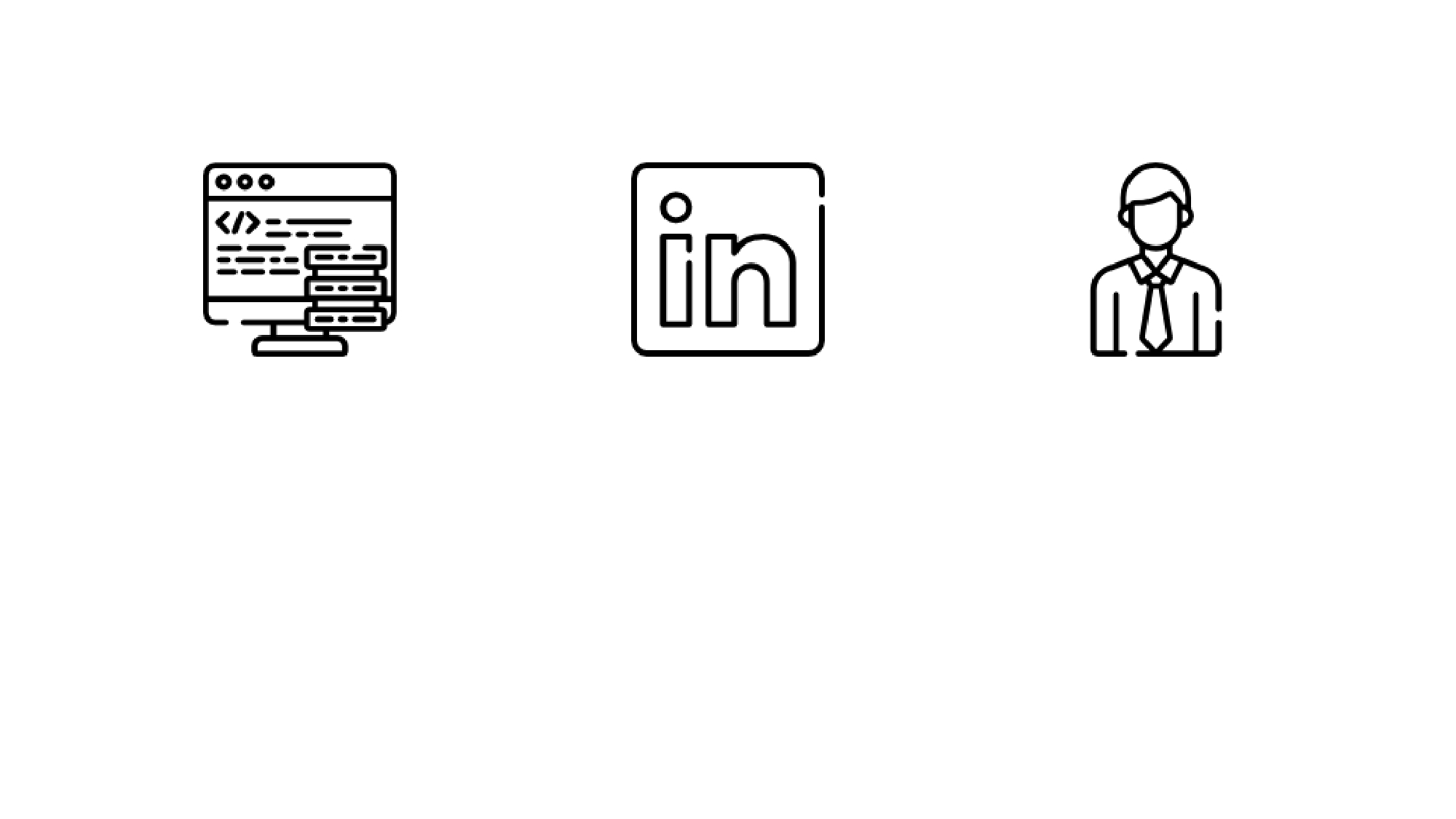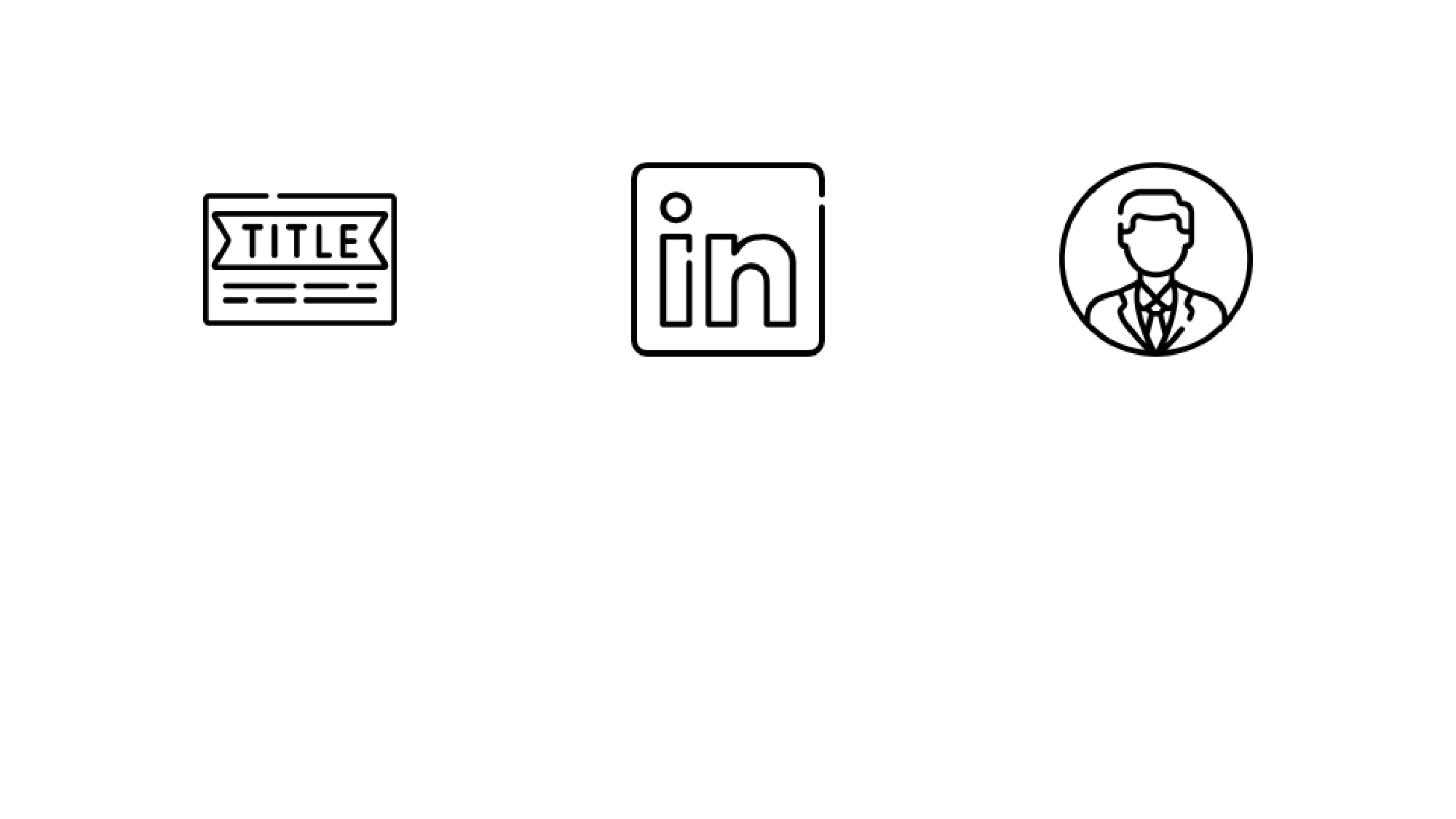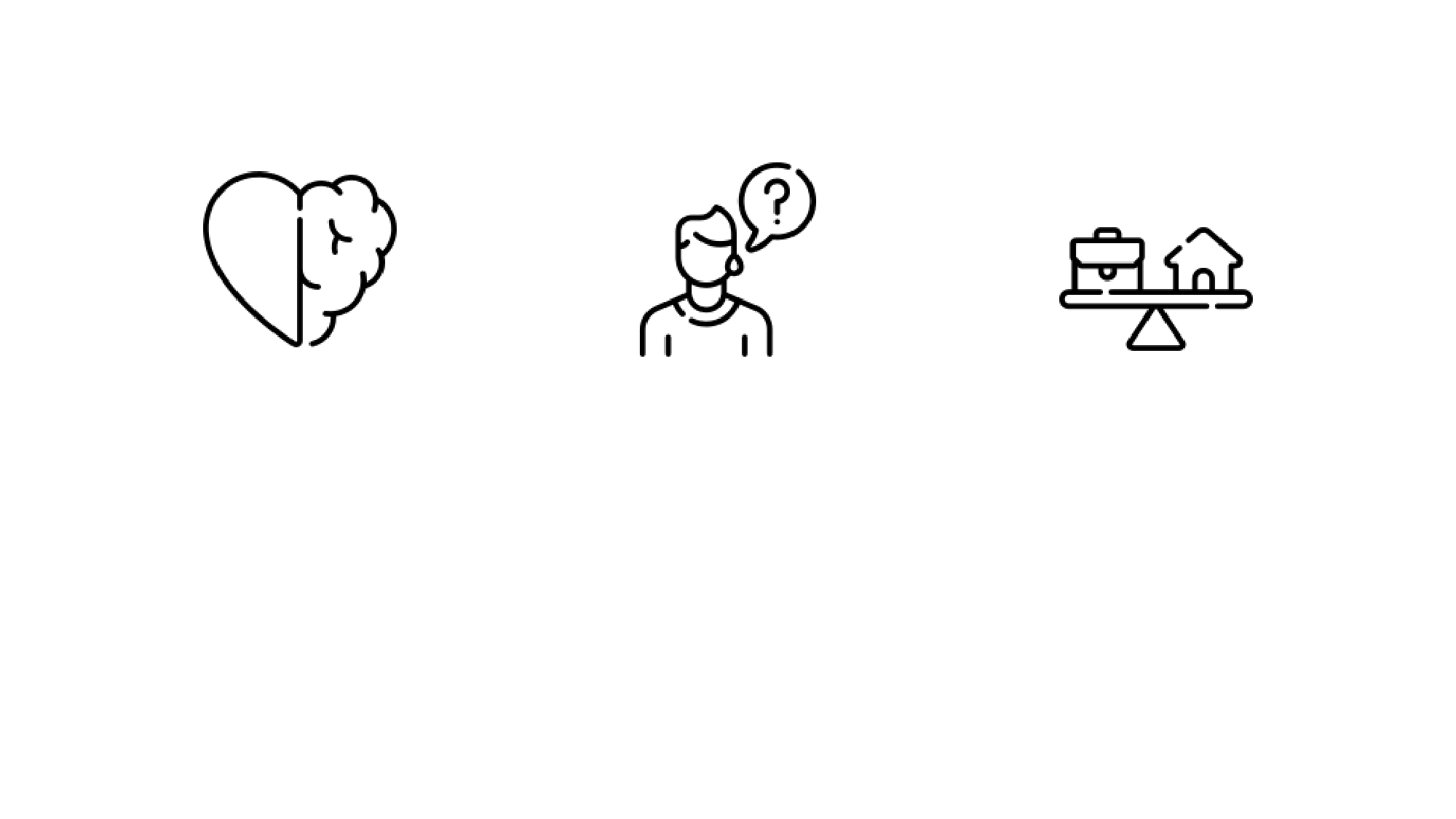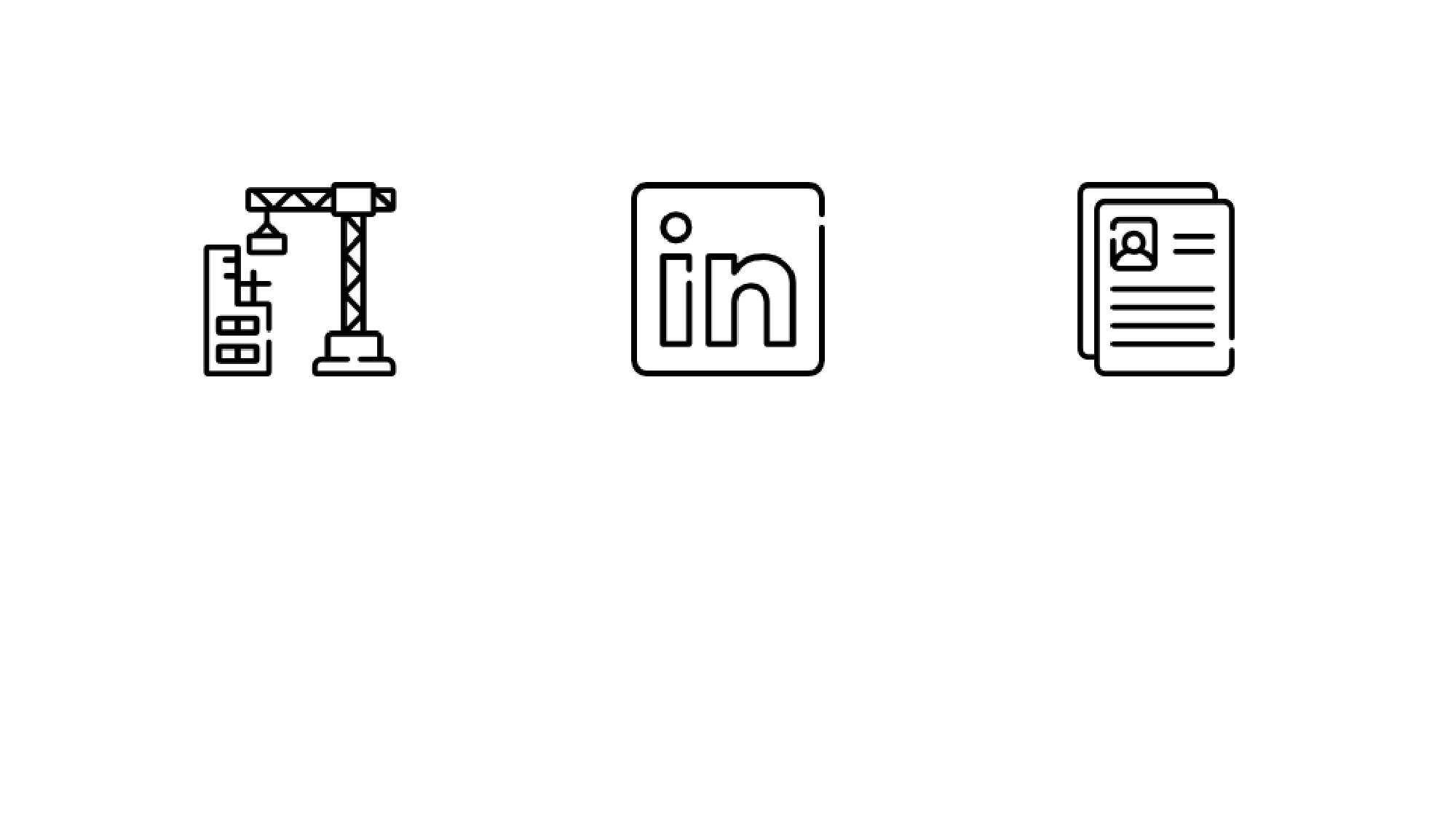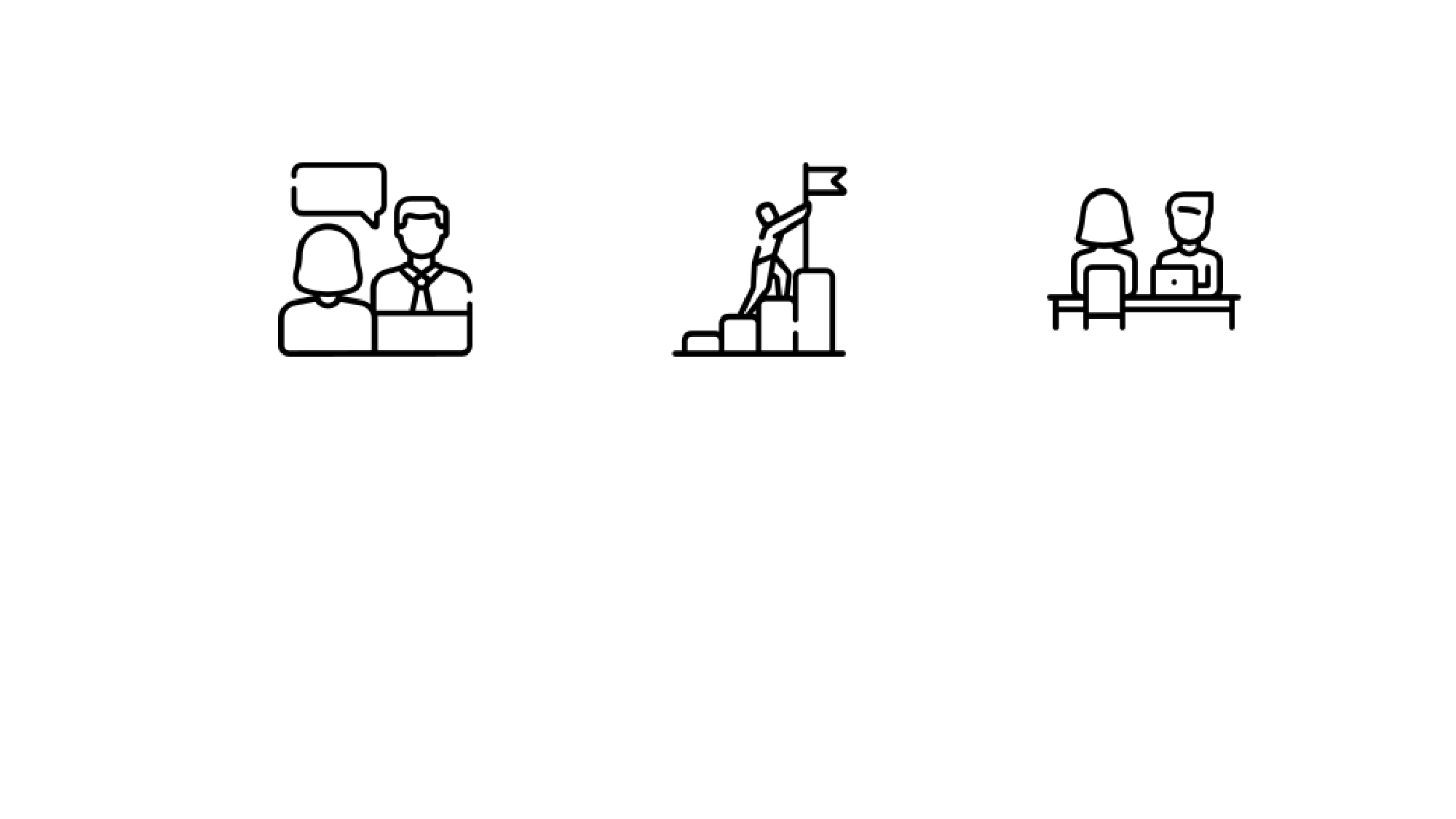
Business Model
A business model is a simple representation of the complex reality of a particular organization.
Business models help understand how a business is organized, who interacts with whom, what goals and strategies are being pursued, what work the business performs, and how it performs that work.
A good business model remains essential to every successful organization, whether it’s a new venture or an established player.
Example:
Any city has a complex reality that includes locations of places, thousands of roads, thousands of pipe routes, thousands of cable routes, etc. To deal with the complexity of a city, we make maps like maps of roads and locations, maps for electrical cable, maps for water pipes, etc.
Each of these maps is considered a model. The model will help us make good decisions on how to go to places or where to dig to find the electrical cable or water pipe.
A business model has three key components: creating value, delivering value, and capturing value. This shows that the business model doesn’t revolve around money. It revolves around value.
The Swiss Consultant Alexander Osterwalder created this Business Model definition as a result of his Ph.D. thesis, entitled The Business Model Ontology, in which he researched different business model definitions to create a single one. This document later gave birth to the popular Business Model Canvas tool.
Business Model Canvas
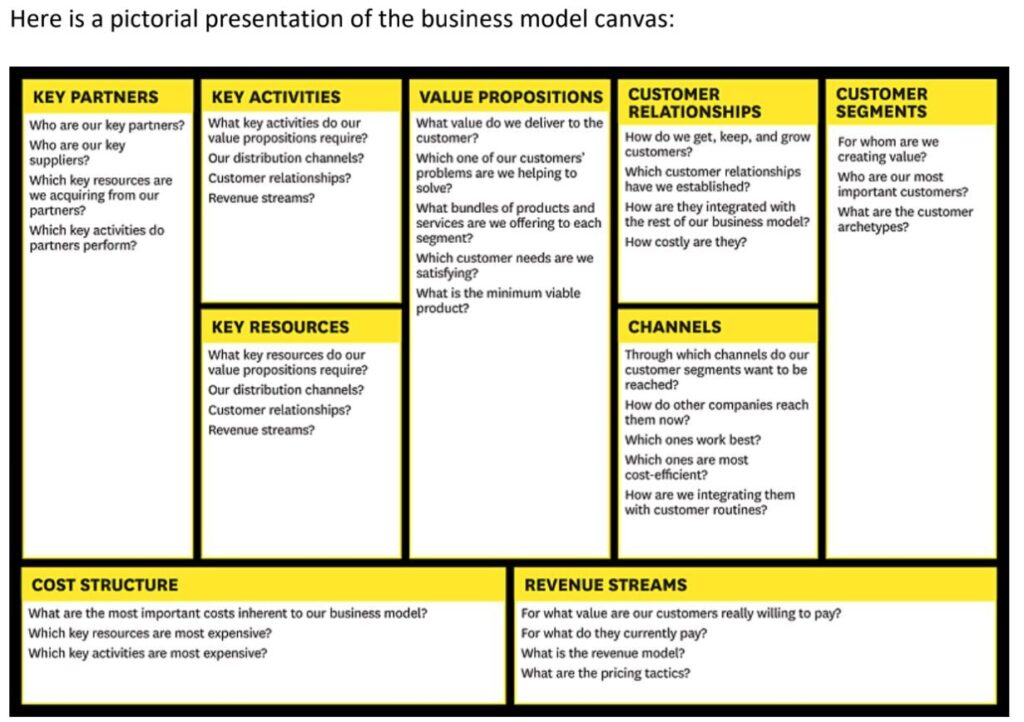
Types of Business Models
There are more than 90 types of business models.
What business model one chooses depends on their business needs and what value one wants to create for their stakeholders. There are different types of business models meant for different businesses.
Some of the types of business models are:
Manufacturer
A manufacturer makes finished products from raw materials. It may sell directly to the customers or sell it to a middleman.
Examples: Ford, Maruti, Tata Motors
Distributor
A distributor buys products from manufacturers and resells them to the public.
Examples: Auto Dealerships.
Retailer
A retailer sells directly to the public after purchasing the products from a distributor or wholesaler.
Examples: Reliance and Future Group
Franchise
A franchise can be a manufacturer, distributor, or retailer. Instead of creating a new product, the franchisee uses the parent business’s model and brand while paying its royalties.
Examples: McDonald’s, Pizza Hut. Café Coffee Day, Dominos
Brick-and-Mortar
Brick-and-mortar is a traditional business model where the retailers, wholesalers, and manufacturers deal with the customers face-to-face in an office, a shop, or a store that the business owns or rents.
Examples: Kirana shops
E-commerce
The E-Commerce business model is an upgrade to the traditional brick-and-mortar business model. It focuses on selling products by creating a web store on the internet.
Examples: Amazon, Flipkart
Bricks-and-Clicks
A company with both an online and offline presence allows customers to pick up products from the physical stores while placing the order online. This model gives flexibility to the business since it is present online for customers who live in areas where they do not have brick-and-mortar stores.
Examples: Almost all apparel companies nowadays.
Nickel-and-Dime
In this model, the primary product provided to the customers is very cost-sensitive and hence priced as low as possible. A certain amount is charged for every other service that comes with it.
Examples: All low-cost air carriers.
Freemium
This is one of the most common business models on the Internet. Companies offer basic services to the customers for free while charging a certain premium for extra add-ons. This model is one of the most adopted models for online companies because it is a great marketing tool and a cost-effective way to scale up and attract new users.
Examples: All major social media platforms
Subscription
This business model might be the most suitable option if customer acquisition costs are high. The subscription business model lets you keep customers over a long-term contract and get recurring revenues from them through repeat purchases.
Examples: All major streaming platforms
Aggregator
An Aggregator Model is a networking E-commerce business model where a firm, known as an Aggregator, collects (or aggregates) data pertaining to goods and/or services offered by several competing websites or application software (commonly known as apps) and displays it on its website or application software.
Typically, an aggregator does not possess any manufacturing or warehousing capability. Instead, it relies on its ability to create a domain that allows visitors to conveniently match the prices and specifications of products and/or services.
Examples: Uber, Airbnb, Oyo.
Online Marketplace
Online marketplaces aggregate different sellers into one platform who then compete to provide the same product/service at competitive prices. The marketplace builds its brand over other factors like trust, free and/or on-time home delivery, quality sellers, etc., and earns a commission on every sale carried on its platform.
Examples: Amazon, Alibaba.
Advertisement
Advertisement business models are evolving even more with the rise of demand for free products and services on the internet. Like earlier times, these business models are popular with media publishers like YouTube, providing the information for free but accompanied by advertisements.
Data Licensing / Data Selling
With the advent of the internet, there has been an increase in the amount of data generated upon the users’ activities over the internet. This has led to the advent of a new business model – the data licensing business model.
Examples: Many companies like Twitter and Onesignal sell or license their users’ data to third parties who then use the same for analysis, advertising, and other purposes.
Agency-Based
An agency can be considered a partner company specializing in handling non-core business activities like advertising, digital marketing, PR, ORM, etc. This company partners with several other companies that outsource their non-core tasks to them and is responsible for maintaining privacy and efficiency in their work.
Examples: Ogilvy & Mathers, Dentsu Aegis Network, etc.
Affiliate Marketing (Indian examples)
Affiliate marketing business model is a commission-based model where the affiliate builds its business around promoting a partner’s product and directs all its efforts to convince its followers and users to buy the same. In return, the affiliate gets a commission for every sale referred.
Example: lifewire.com.
Dropshipping
Dropshipping is an e-commerce business model where the business owns no product or inventory but just a store. The actual product is sold by partner sellers who receive the order when the store receives an order from the ultimate customer. These partner sellers then deliver the products directly to the customer.
Example: IndiaMART
Network Marketing
Network marketing or multi-level marketing involves a pyramid structured network of people who sell a company’s products. The model runs on a commission basis where the participants are remunerated when –
- They make a sale of the company’s product.
- Their recruits make a sale of the product.
The network marketing business model works on direct marketing and direct selling philosophy where there are no retail shops, but the offerings are marketed to the target market directly by the participants. The market is tapped by making more and more people part of the pyramid structure where they make money by selling more goods and getting more people on board.
Example: Amway
Crowdsourcing
The crowdsourcing business model involves the users contributing to the value provided. This business model is often combined with other business and revenue models to create an ultimate solution for the user and to earn money.
Examples: Wikipedia, reCAPTCHA, Duolingo, etc.
Peer 2 Peer Catalyst/Platform
This model is based on cooperation specializing in mediating between individuals belonging to a homogeneous group. It is often abbreviated as P2P. The company offers a meeting point, i.e., an online database and communication service that connects these individuals (these could include offering personal objects for rent, providing certain products or services, or sharing information and experiences).
Examples: Craigslist, OLX, and Quikr
Blockchain
The Blockchain is an immutable, decentralized, digital ledger. It is a digital database that no one owns but anyone can contribute to. Many businesses are taking this decentralized route to develop their business models. Models based on blockchain are not owned or monitored by a single entity. Instead, they work on peer-to-peer interactions and record everything on a decentralized digital ledger.
SAAS, IAAS, PAAS
Many companies have started offering their software, platform, and infrastructure as a service. The ‘as a service’ business model works on the principle of pay as you go where the customer pays for his usage of such software, platform, and infrastructure; he pays for what and how many features he has used and not for what he hasn’t.
Example: SAAS – Freshworks, Zoho | IAAS- AWS, Azure | PAAS – Heroku, Google App engine
High Touch
The High Touch model requires lots of human interaction. The relationship between the salesperson and the customer has a significant impact on the company’s overall revenues. The companies with this business model operate on trust and credibility.
Examples: Hair salons consulting firms.
Low Touch
The opposite of the High Touch model, the low touch model, requires minimal human assistance or intervention in selling a product or service. A company following such a business model would not have to maintain a vast sales force, and their costs decrease. Such companies also focus on improving technology to further reduce human intervention while making the customer experience better at the same time.
Examples: Ikea, SurveyMonkey.
Auction-Based
They are mainly used for unique items that are not frequently traded and don’t have a well-established market value, like collectibles, antiques, real estate, and even businesses.
This business model involves listing an offering by the seller and the buyers making repeated bids to buy that offering while fully aware of other bids by other buyers. The offering is sold to the highest buyer, with the auction broker charging a listing fee and/or commission based on the transaction value.
Example: eBay
Reverse-Auction-Based
A reverse auction is an auction where the roles of a buyer and seller are exchanged, i.e., sellers bid prices instead of buyers.
The reverse-auction-based business model is often used when there are several sellers selling a similar offering to a single buyer. These sellers lower their price with every bid, and generally the bidder with the lowest bid wins the auction. However, there are cases when the bidder with a price higher than the lowest bid wins the auction as the buyer likes his offer (offering with add-ons)
A platform that lets sellers bid for government contracts is an example of a reverse auction-based business model.
Razor And Blades
The razor and blade model is used by companies that deal in complementary or companion products like razors and blades.
It involves selling the high-margin root product at a low price to increase the volume sales of the complementary or related low-margin product.
By using this model, businesses create a stream of recurring income over the life of the root product.
Companies dealing in razors, mosquito vaporizers, and other refillable products employ this business model. The games industry also uses this model by providing the gaming console at a very economical price and making good profits with the sale of games.
Reverse Razor and Blades
A business employing a reverse razor and blades model offers the low margin item at a significantly less price or below the cost to encourage the sale of the high margin product.
Amazon employs this business model to sell its Kindle e-reader. It provides Kindle ebooks at a price lower than their actual cost, so to make people consider Kindle as a one-time investment to enjoy low-cost books throughout its life.
On-Demand
An on-demand model is where a customer’s demand is fulfilled by delivering goods and services on request (usually immediately).
The internet and mobile phones drive this business model. It works like this:
- The customer order products on services through a web app.
- The request is received by the company’s employee or a demand-fulfilling partner.
- The employee or a partner fulfills the demand by delivering the ordered product or service either immediately or in the time promised.
Examples: Uber, Instacart, and Postmates
User Community
Driven by the network effect, this business model involves granting access to a community or a network in return for a membership fee.
Example: Glassdoor
Final Thoughts
Of course, most companies do not operate on any one of these business models but instead on a combination of some. What business model one chooses depends on their business needs and what value one wants to create for their stakeholders.
References
https://www.oreilly.com/library/view/business-modeling/9780123741516/xhtml/Preface.html
https://www.just.edu.jo/~rami/modeling%20and%20simulation%20ch%201.ppt
https://businessmodelanalyst.com/business-model/
https://hbr.org/2015/01/what-is-a-business-model
Related Posts
Agile Software Development
How well this mistaken ideas off denouncing pleasure & praisings will give you complete.
Outsourcing
How well this mistaken ideas off denouncing pleasure & praisings will give you complete.
Start Ups
How well this mistaken ideas off denouncing pleasure & praisings will give you complete.
SDLC
How well this mistaken ideas off denouncing pleasure & praisings will give you complete.







